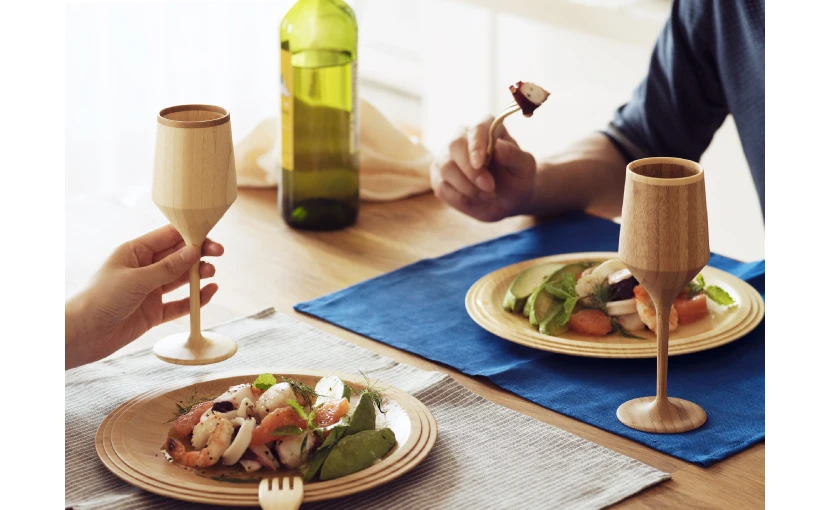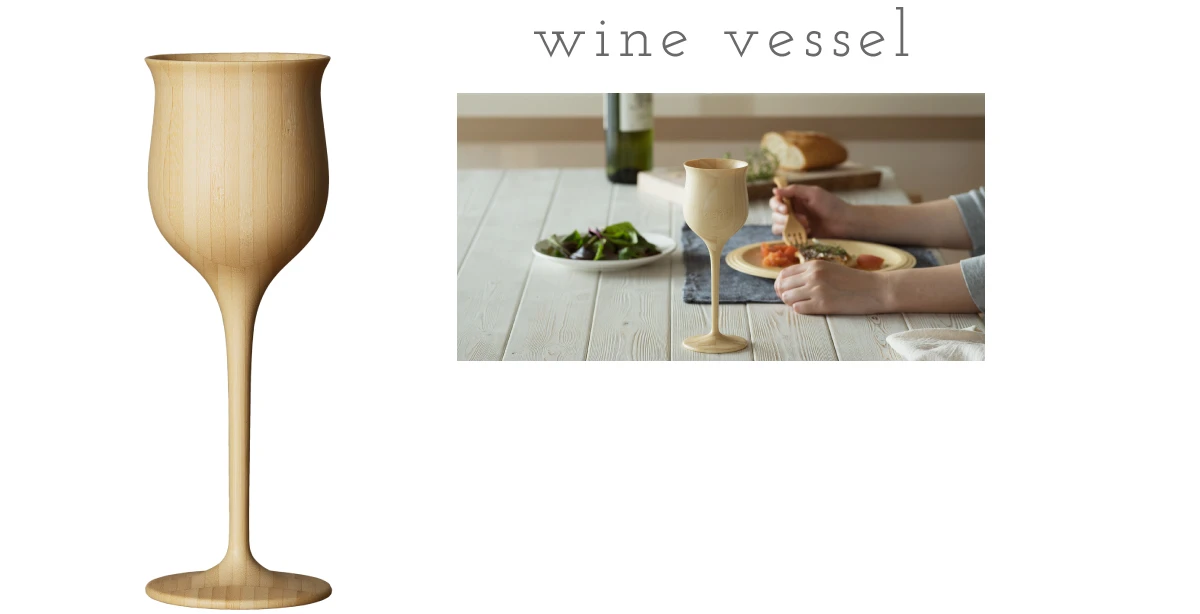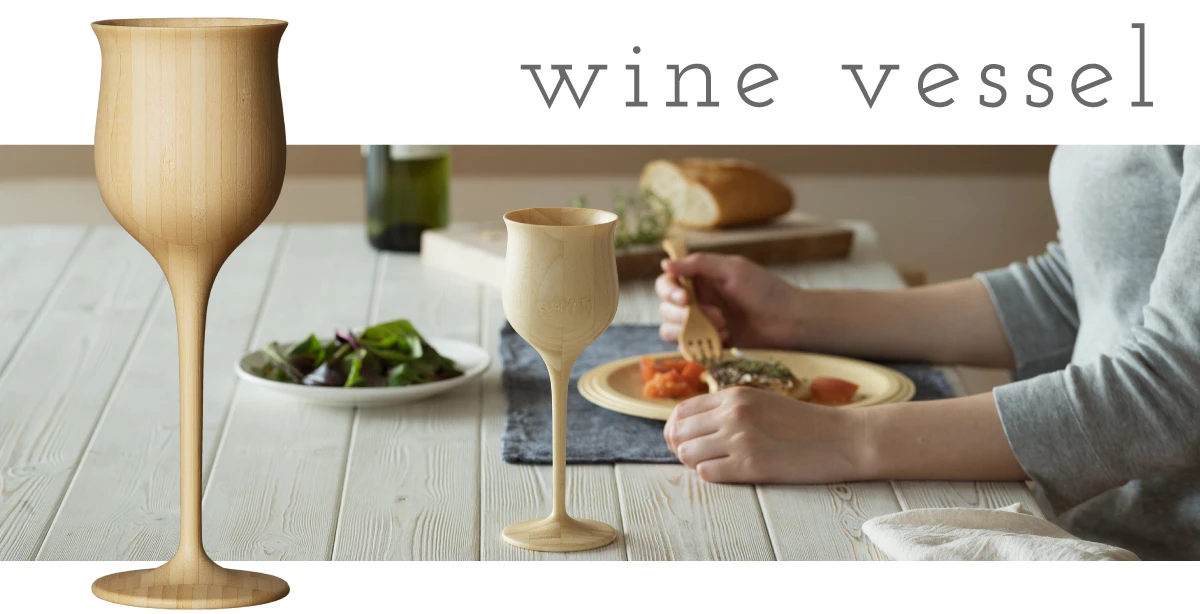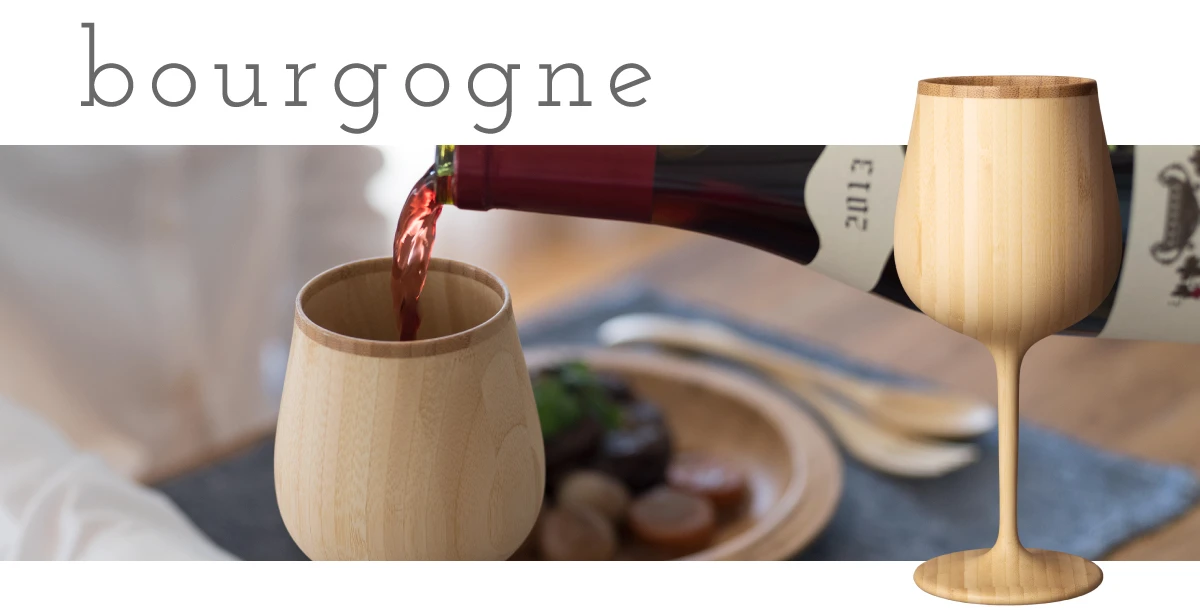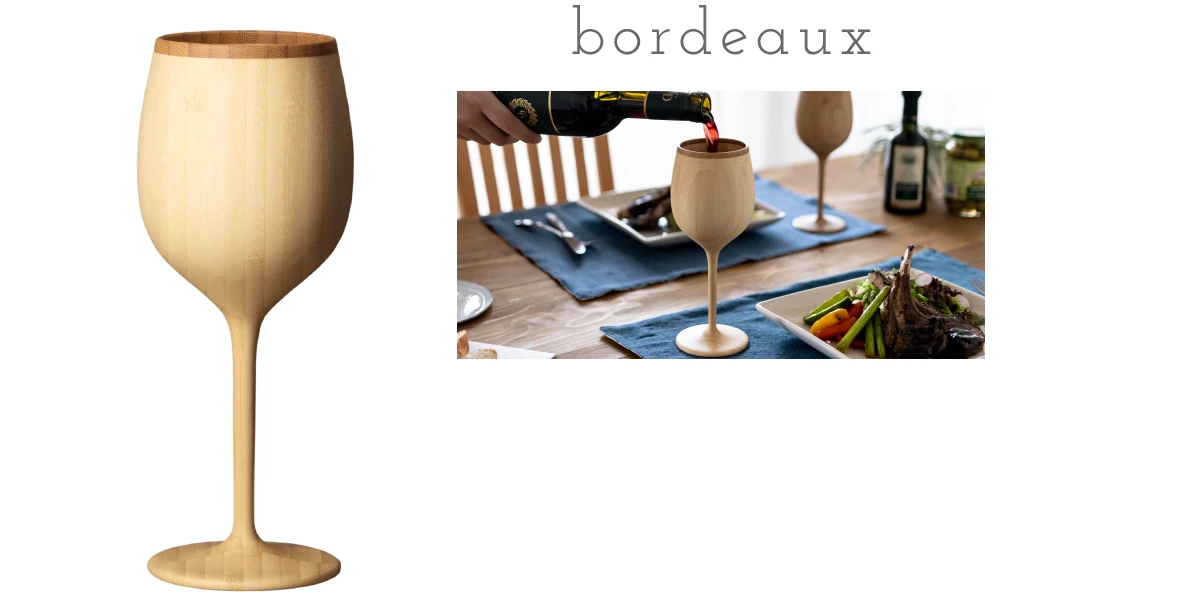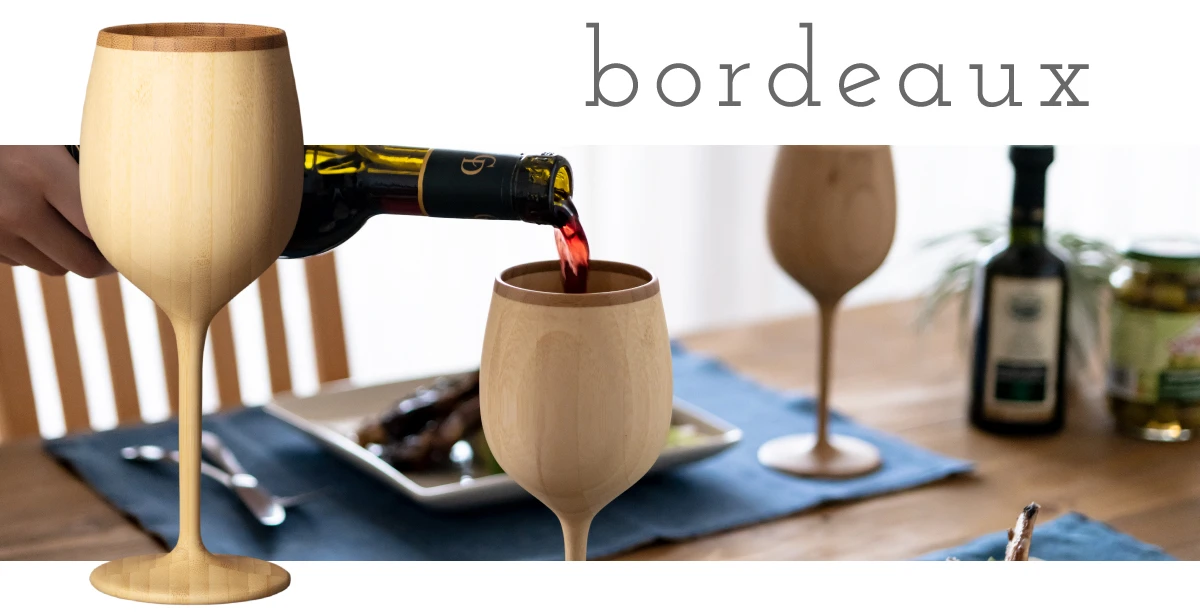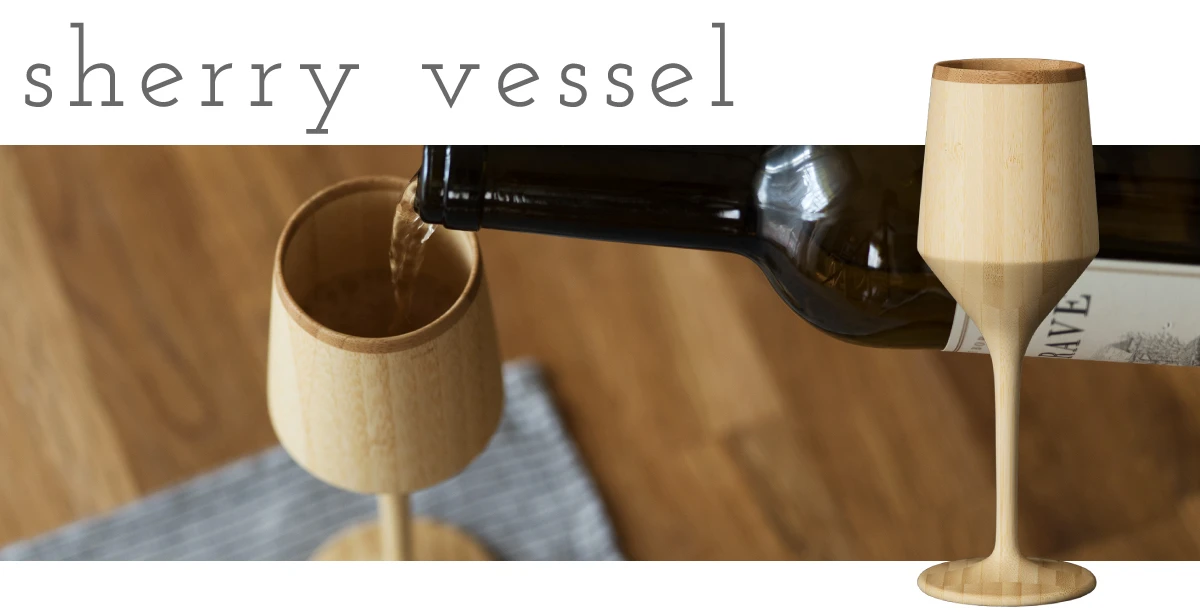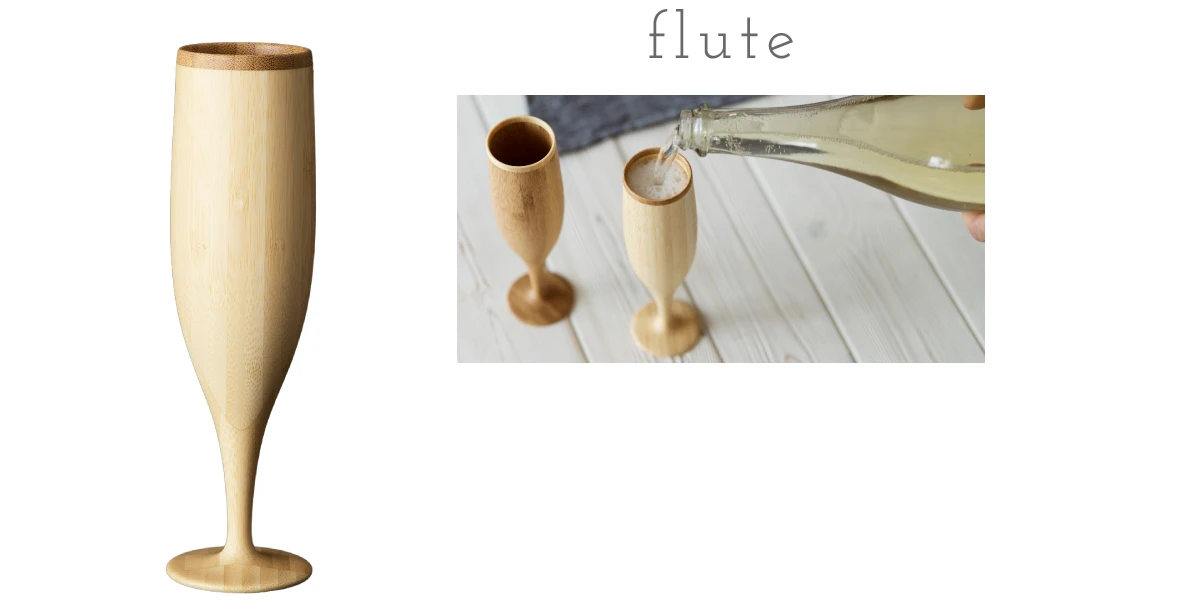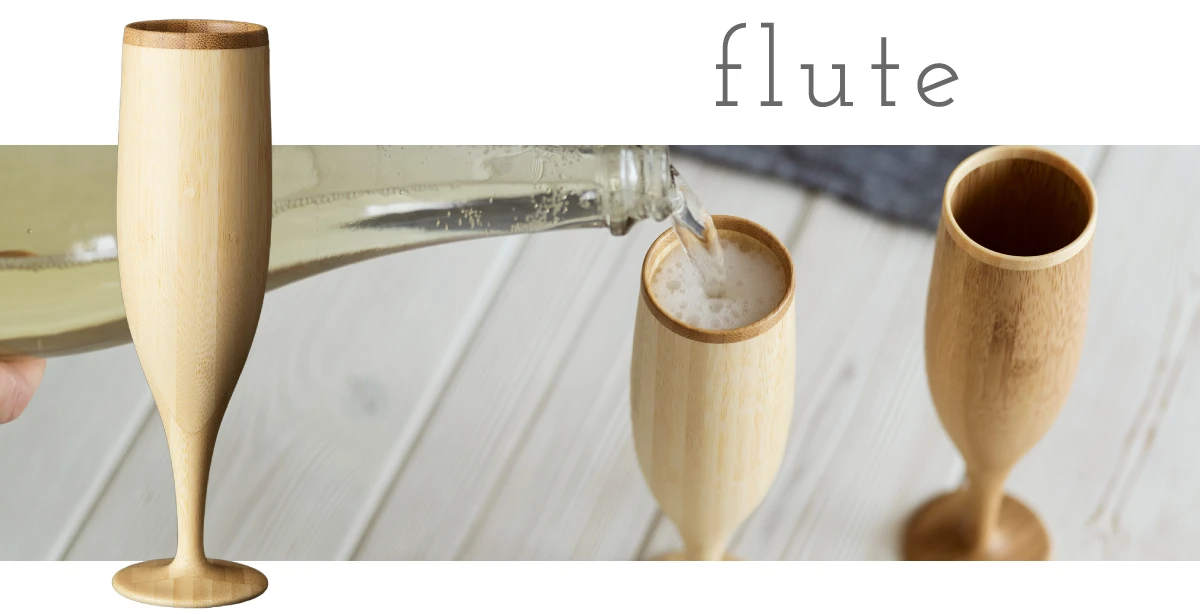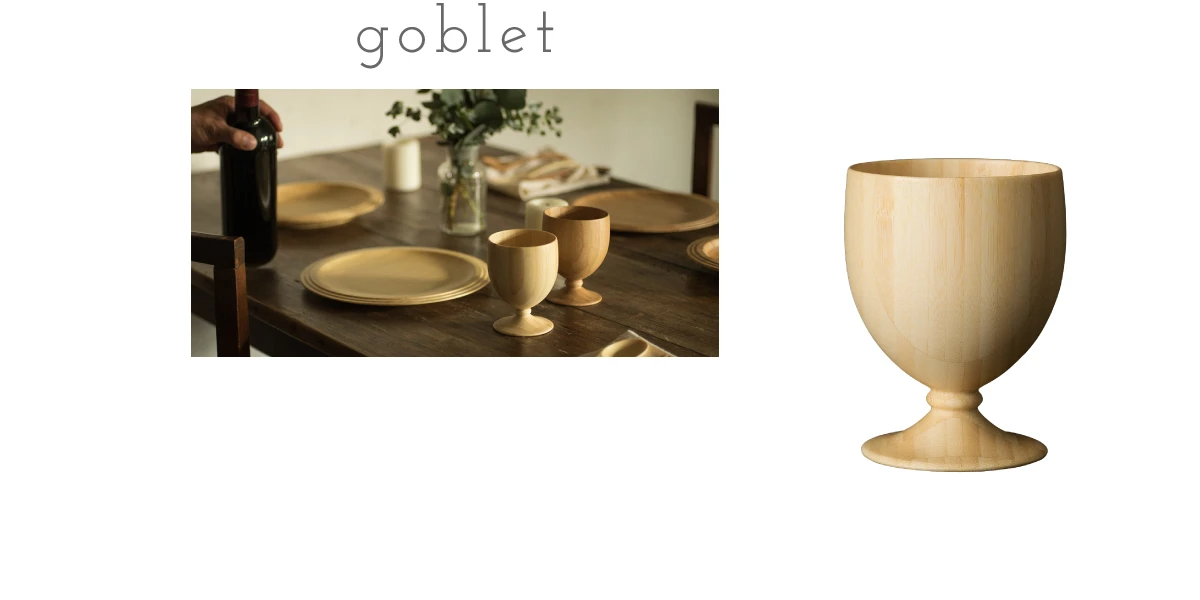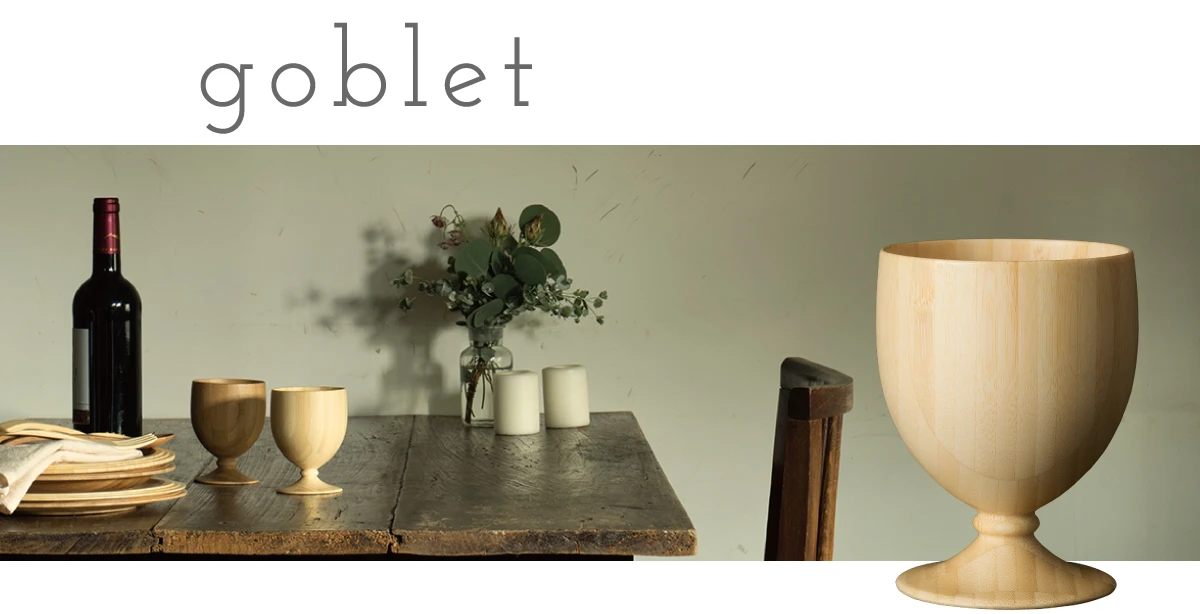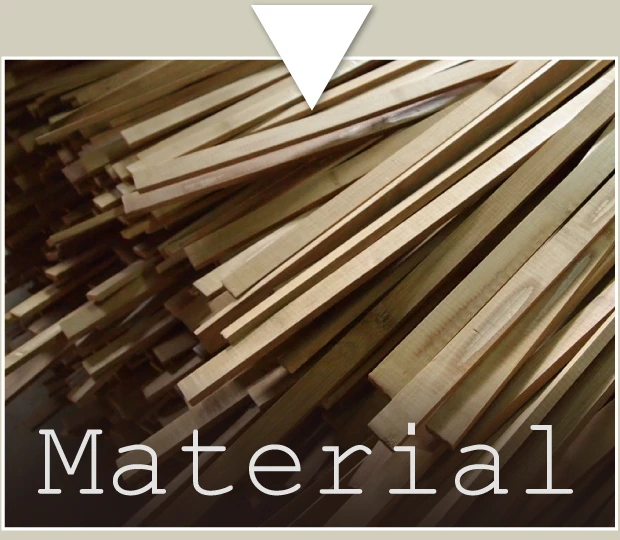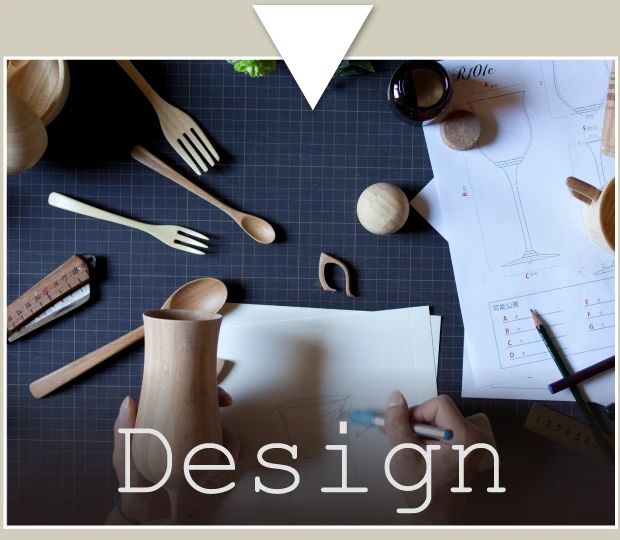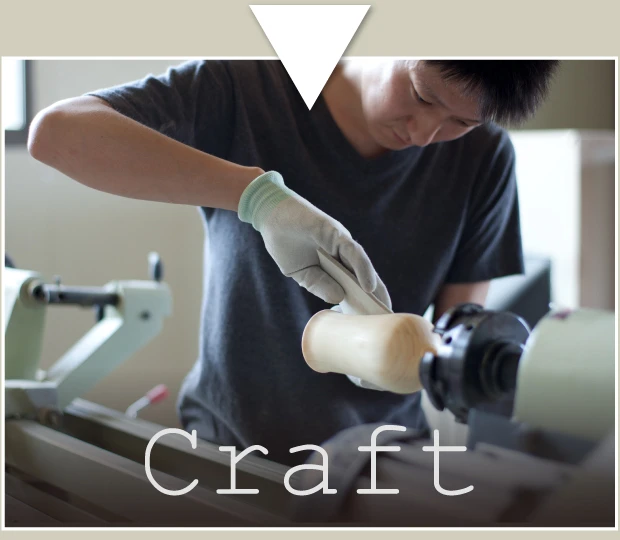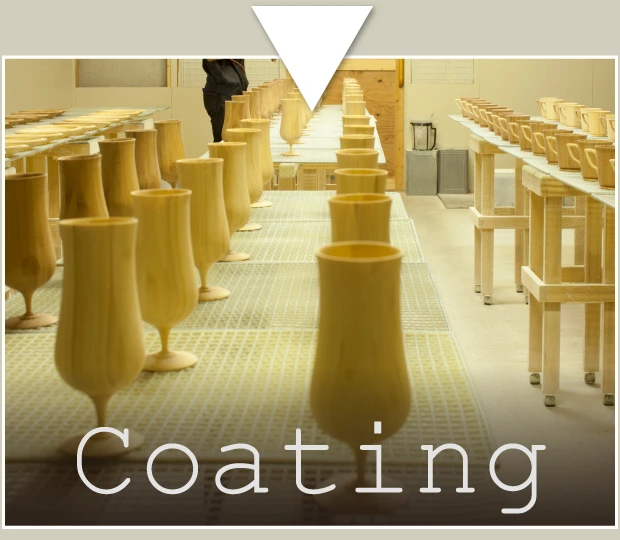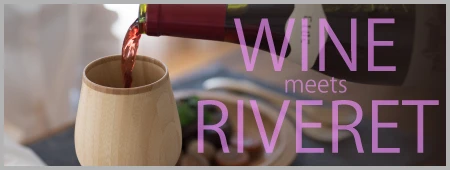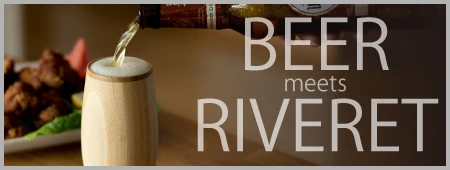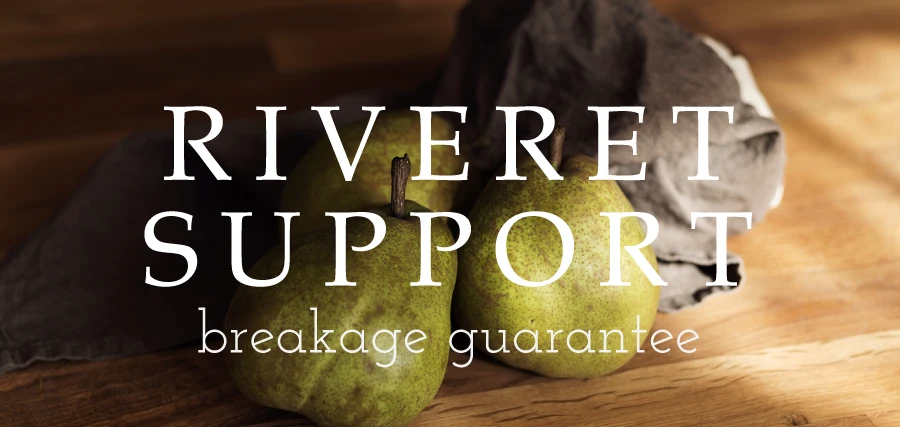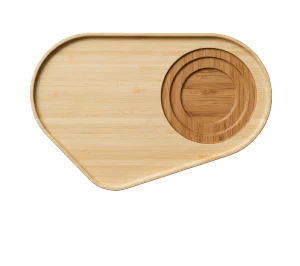A drinking vessel made for wine
This drinking vessel imparts a flavor unique to RIVERET, which can be expressed only by natural bamboo material, not glass.
You want to enjoy the taste of wines that you drink at restaurants and bars at home as well. To satisfy this demand, RIVERET has since its establishment used its own unique perspective to research drinking vessels that further enhance the individuality of various wines.


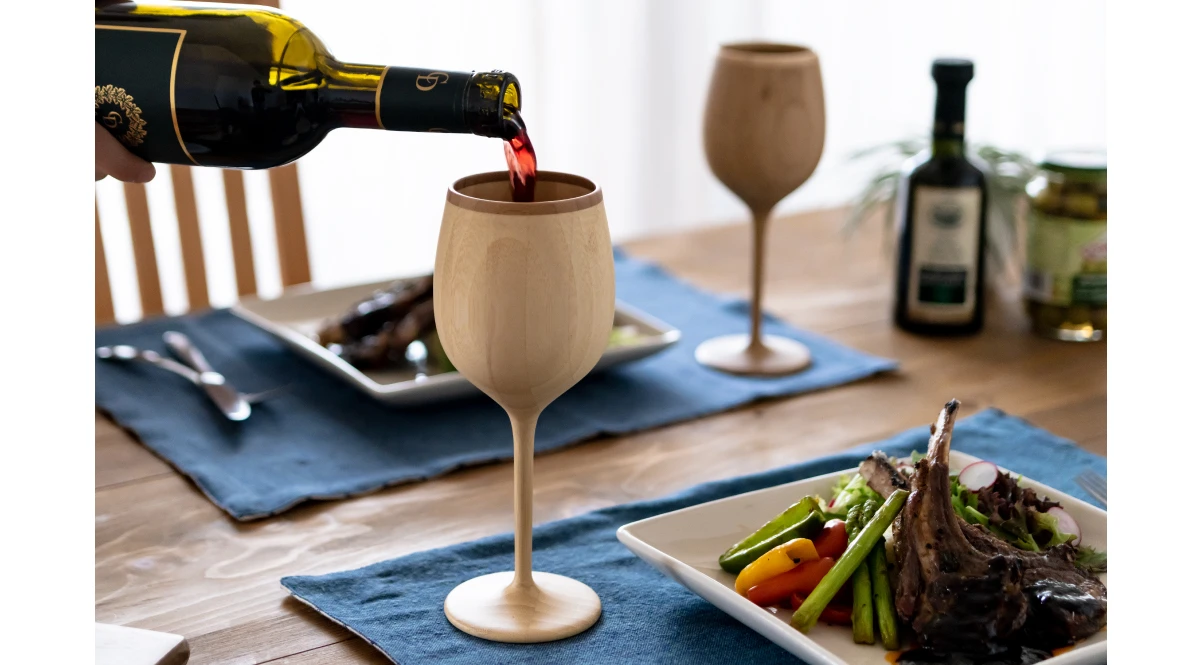
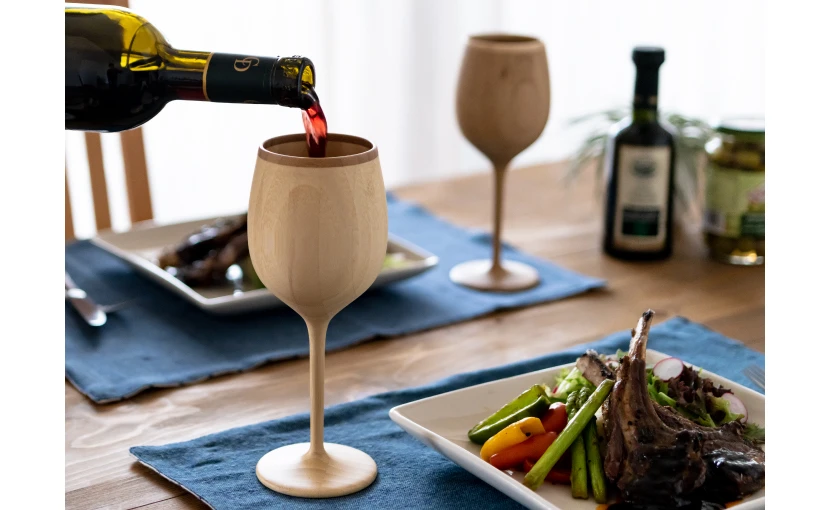
When you think of a wine glass, you generally think of one made of glass, and the truth is the suitability of materials other than glass for the delicateness of wine, which is susceptible to the effects of containers, still cannot be found. However, we believe that there are definitely flavors that can be expressed only by the natural material of bamboo, and RIVERET’s unique designs and techniques have created a vessel for wine.



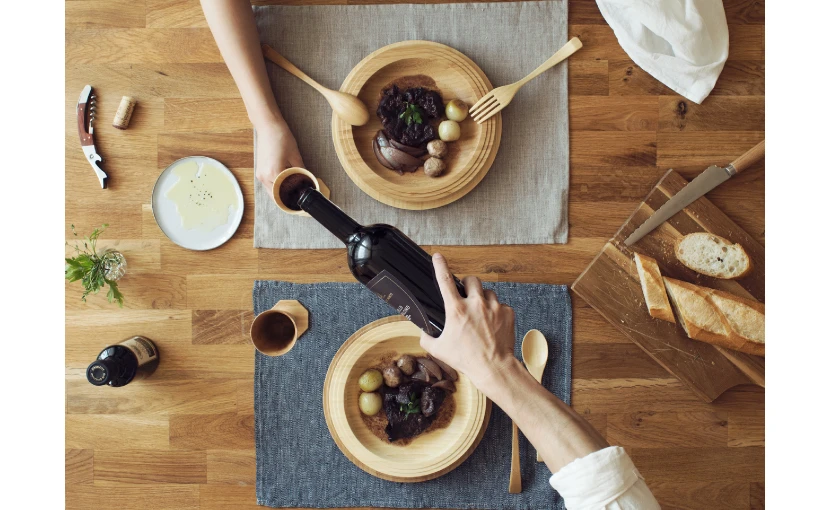
Firstly, an advantage of a vessel made using the natural material of bamboo is its low thermal conductivity. Unlike trees and similar to grasses and leaves, bamboo has straw-like tubes called conducting vessels that are bundled in a straight line, which act as heat insulating material.
In other words, the temperature of the container itself is stable compared to glass or porcelain, which means that the wine in the container is less influenced by the temperature of the open air. We believe that this makes it possible to preserve optimal conditions longer without negatively affecting the natural flavor of wine.




Appearance and touch influence the impression of taste considerably. In addition to the differences in hue and mood, glass and natural material have large differences in firmness, material feel, and warmth when they touch the mouth or hand. Important elements of flavor are included also in feelings of warmth and softness.




We asked Tsuyoshi Seko, chef at the Italian restaurant “Waina” about his impressions of RIVERET bamboo glasses, and he told us about the merits of the flavors unique to RIVERET glasses made of natural material.


In the case of a mild Merlot, the taste and flavor are condensed without change in gentleness or mildness, and the moderate astringency of tannins and the natural aroma of the Merlot become active. Even Rosso di Montalcino is mellow with a conspicuous flavor, and the aftertaste disappears quickly. Because it seems that decanting (swirling the glass to include air) is occurring naturally in the glass, there is the impression that the conditions for delicious wine have been produced soon after the bottle is opened and the wine is poured. I would say that this glass is very suitable for wine.


In the case of a fruity and dry Chardonnay, mildness and depth are added to the sharp attack for a longer-lasting aftertaste. The taste becomes gentler, and harshness is suppressed and becomes mild. Acidity is very important for Chardonnay, and while it is mild, the acidity also firmly remains and has body. In this case too, even when decanting has not been performed, there is an impression of mingling with a moderate amount of air. The aroma stands firm, and the flavor is mellow in a good way.


For sparkling wine, the bubbles become fine, and the stimulus of mild taste settles quickly and gently. Even when the gas has settled down after a few sips, it can be felt firmly, and the creaminess increases. The taste seems to be gently wrapped in bubbles, and the aroma also seems to spread firmly. The characteristics of sparkling drinks become more prominent particularly when drinking from a bamboo glass that has been chilled.




We asked Manabu Kajita of “Japan Made-to-Order Planning” about his impressions of RIVERET bamboo glasses, and he spoke frankly about RIVERET glasses made of natural material.


Unlike glass containers, it is not possible to check the hue of wine from the side with a bamboo vessel, but it is possible to clearly check the differences of hues of various kinds of grapes. People that like the stimulus of strong bubbles with sparkling drinks may prefer glass. However, because gas settles down soon after pouring, and gentle bubbles persist, the expanse of aroma is easy to understand. Tongue feel is a very important element for taste. The gentle feel of the natural material makes the tongue-feel smooth, and mildness can be experienced. Because the firmness and cold of the tongue-feel may negatively affect the flavor in the case of glass containers, the flavor may be increase greatly depending on the setting or chosen wine.
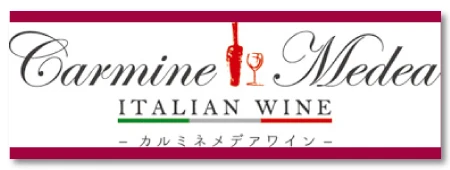
Of course, this is one opinion. When drinking wine with tableware made of materials other than glass, there may be times in which personal tastes diverge greatly. Enjoying wine by using glass and natural material to suit the situation may further expand one’s wine preferences.
A bamboo drinking vessel for wine


From growing the bamboo, to manufacturing, shipment and after sales service, all processes are managed by our company as much as possible. We believe the essence of monozukuri (design and manufacturing) exists in all of these processes.





